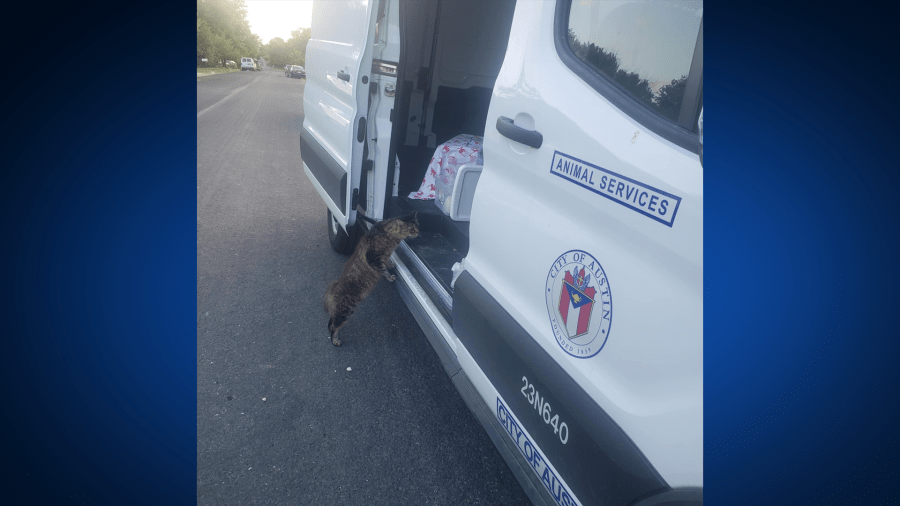AUSTIN (KXAN) — An Austin Animal Center-led effort is helping minimize local feral cat populations, with teammates and volunteers recently offering trap-neuter-return, or TNR, services within a north Austin community.
TNR services involve trapping a free-roaming cat to be spayed or neutered before returning it to the same community where it was found, per AAC.
In the Dessau Estates neighborhood in north Austin, community cat program team members and volunteers have helped TNR 93 cats in the area thus far, according to an AAC Facebook post. The area has a noted “sizable free-roaming cat population” with more robust service needs, the social media post added.
How does AAC trap, neuter and return feral cats?
AAC’s TNR process involves volunteers aiding in trapping and transporting cats to AAC’s Community Cat Recovery Unit — also known as the Cattyshack. Once there, Austin Humane Society (AHS) retrieves the cats and takes them in for spay and neuter procedures, vaccinations and an ear tip to note they’ve been spayed or neutered.
After the procedure, AHS returns the cats to the Cattyshack to recuperate, before AAC volunteers pick up the cats and transport them back to the same location where they were found. AAC officials stressed the center’s community cats TNR program doesn’t remove or rehome any healthy, free-roaming cats.
What other services does AAC’s community cats program offer?
With thousands of free-roaming cats in Austin as well as injured or sick cats needing care, AAC also operates a community cat medical voucher program. That’s designed to provide financial assistance and aid for sick and injured free-roaming cats that aren’t owned by anyone.
Those seeking additional details about the program can contact AAC at communitycats@austintexas.gov.
Those who do find a feral cat who’s dealing with a life-threatening medical emergency are encouraged to call 3-1-1 to seek more timely medical care. Likewise, residents can call 3-1-1 for cats who are found sick or injured. That will cover cats who are acting lethargic, have a bad limp, seem dehydrated or emaciated, have been hit by a vehicle or have open wounds and sores.
AAC also has its shelter-neuter-return program, where free-roaming cats receive a free spay or neuter procedure, a rabies vaccine and an ear tip signifying they’ve been fixed. The program’s intake is currently on pause as of July 2, but when operating, residents can drop cats needing SNR services off during AAC’s open hours.
Similar to the TNR program, SNR recipient cats are taken to AHS for surgery. Afterwards, residents can pick up the cat from AHS, or AHS team members and volunteers will release the cats back to the exact location they were taken from.
These services apply to cats in the City of Austin as well as unincorporated areas in Travis County.
More details about AAC’s free-roaming cat program efforts are available online.
